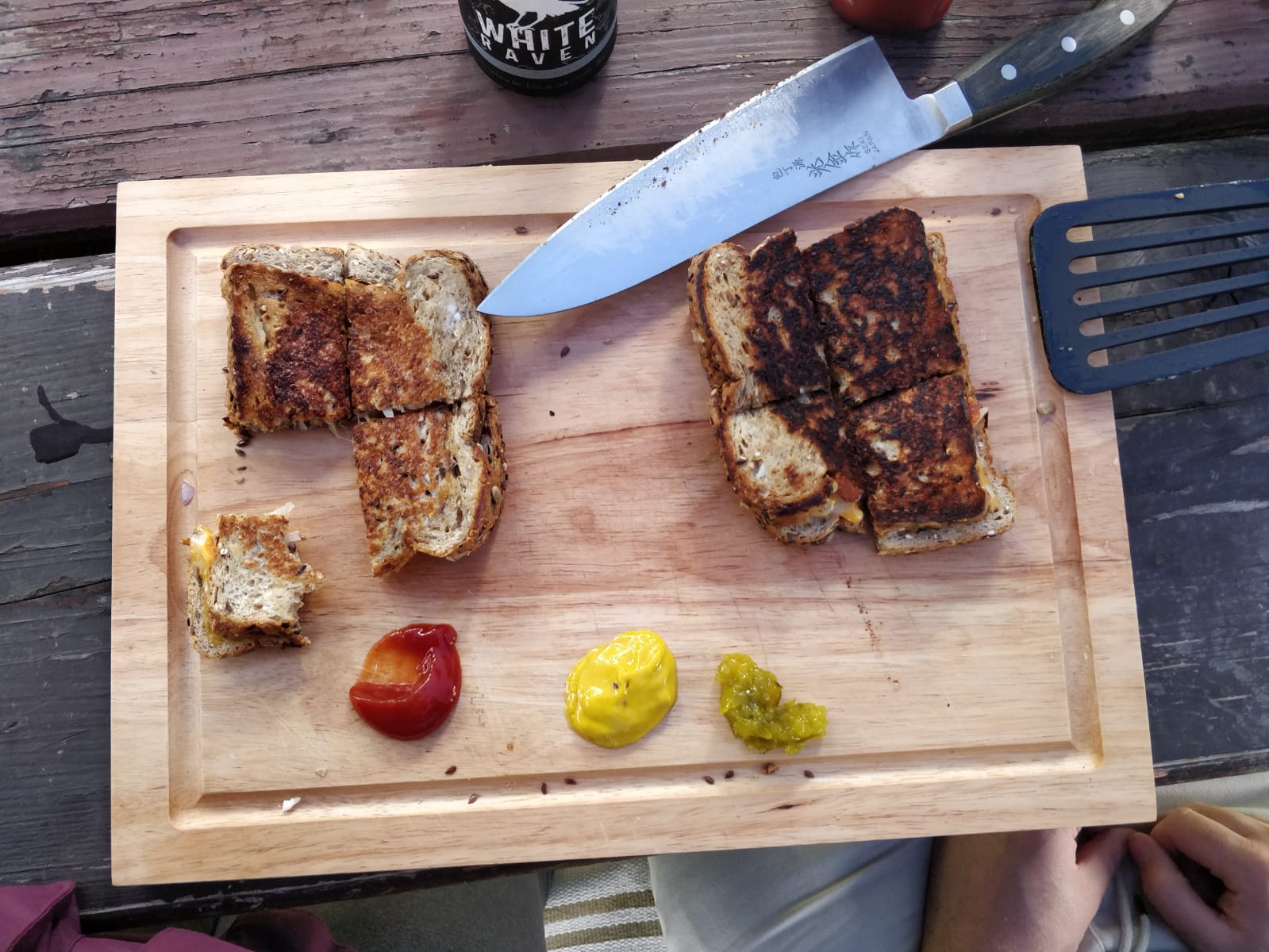This morning we woke up to rain again. It wasn't meant to rain until this evening, but when you're in amongst the mountains, the forecasts seem to be barely more than guesses. We packed up the drenched tent and drove ourselves over to the shower block. Katie kept watch on the odometer, and it turns out that it's 1km one-way to the showers. The price of being clean! After refreshing ourselves, we drove up the road to Jasper where we found a bagel and coffee at a cafe.
The main event today is the Columbia Icefields Glacier Adventure; a ride in an Ice Explorer bus out onto the Athabasca Glacier, where we can get out and walk around! We had to be at the Columbia Icefields Glacier Discovery Centre, about 1.5 hours back down the Icefields Parkway, at about 11am, so we ate quickly and got back out onto the road. This road trip has a lot of driving.
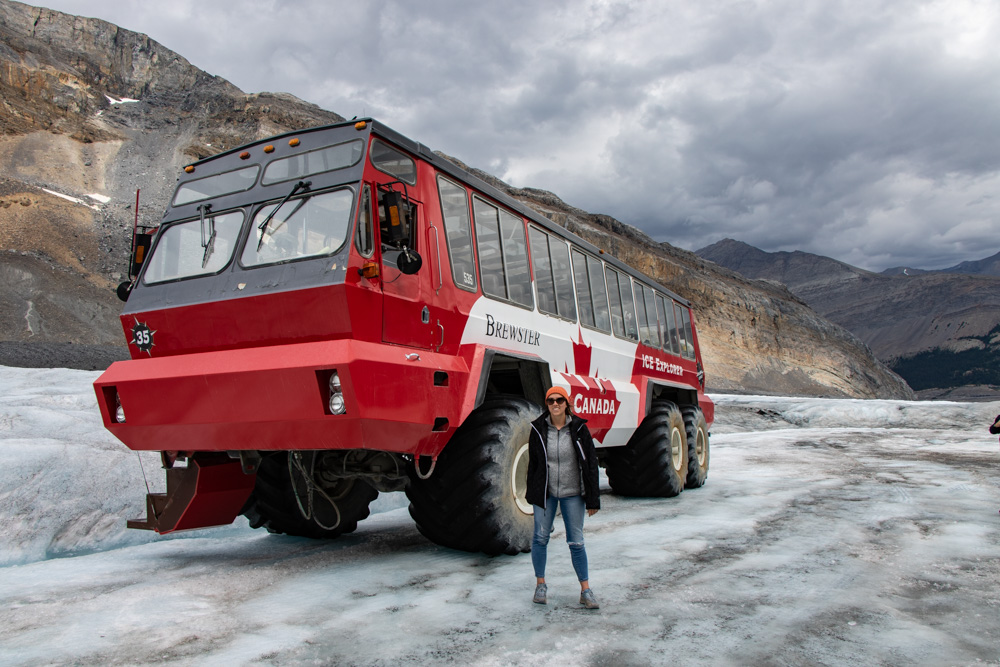
From the Discovery Centre, we took a quick bus ride over to the other side of the highway, where the Ice Explorer terminal and the Athabasca Glacier are. The Ice Explorers (actually a Foremost Terra Bus) are incredible behemoths, weighing more than 25,000kg with six tyres a metre wide and over 1.7m high. We hopped in and slowly crawled our way onto the glacier.

At the top, they let us off and gave us 20 minutes to walk around. We listened to a short talk from a "glacier host", who showed us a Moulin. Moulins (or mill wells) are holes in the glacier dug by meltwater streams flowing over the top of the glacier which has begun to pool. The stream running into the pool causes the water to swirl and slowly melts away at the ice until a hole forms. These holes can go all the way to the bottom of the glacier, and therefore be hundreds of metres deep. It's hypothesised that the water running to the base of the glacier through these holes helps lubricate the glacier, affecting how it moves.
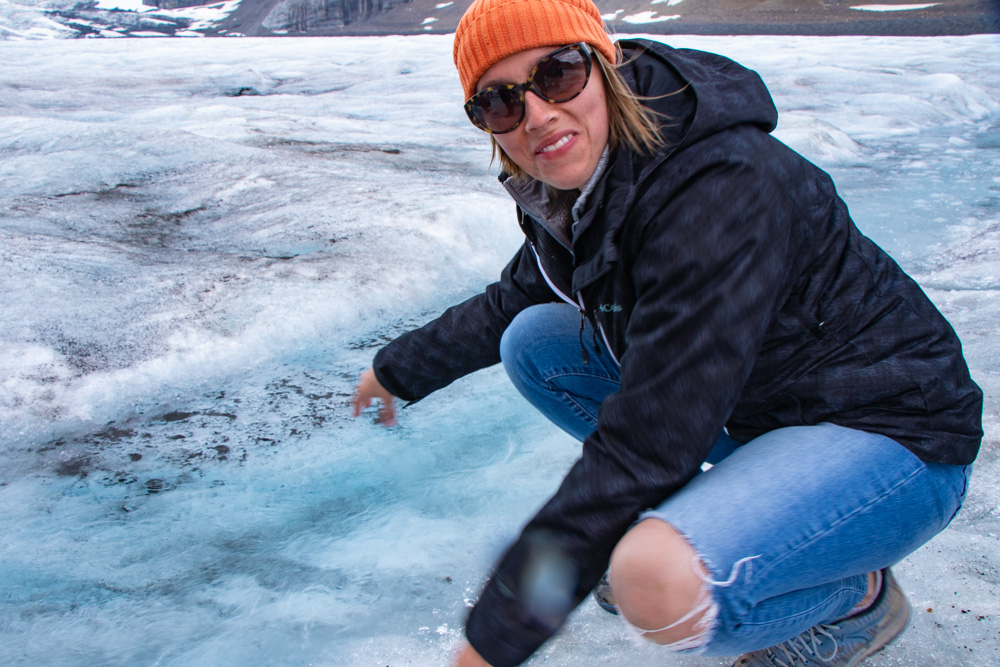
We walked to the top of the designated exploring area to where there was a stream running in from somewhere higher up. Katie and I dipped our hands in and sampled some glacier water! It was super cold, and I could feel little chunks of ice in it flowing past my fingers. The water tasted just as good as any I've ever drunk. Glacier fresh! We got back on the Ice Explorer and roared back to the terminal at its top speed of 14km/h.
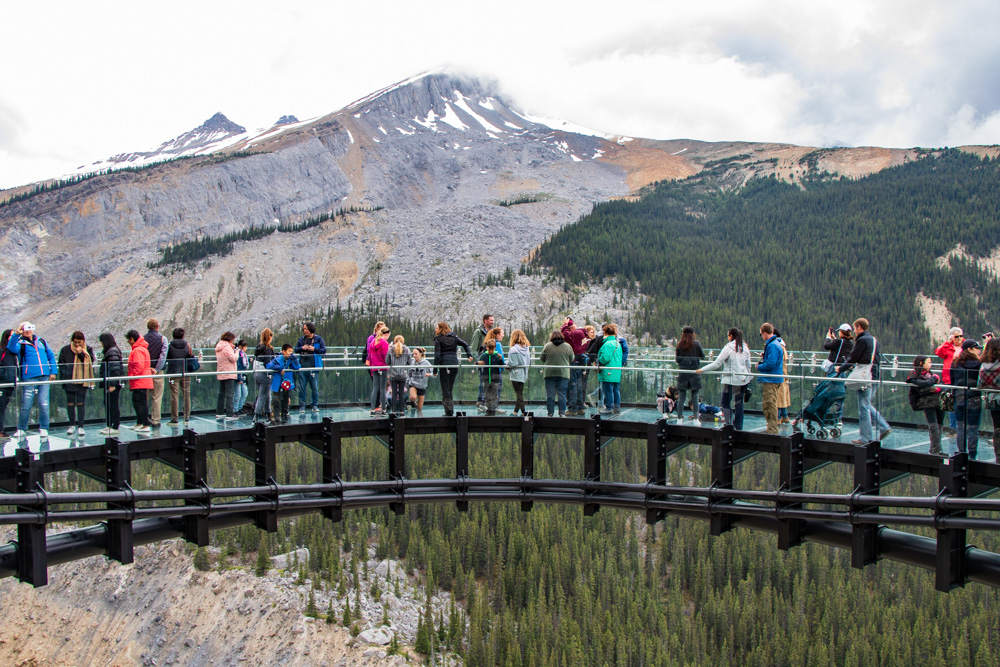
From the terminal, we got on yet another bus and drove 10 minutes up the road to the Glacier Skywalk. The Skywalk is a curved glass-floored walkway that hangs out 280m above the Sunwapta Valley. Along the path to the Skywalk were lots of informational displays about the geography, geology, and wildlife of the area. We joined on to a guided tour for a while, until we decided it was going too slowly, and stepped out onto the Skywalk by ourselves.
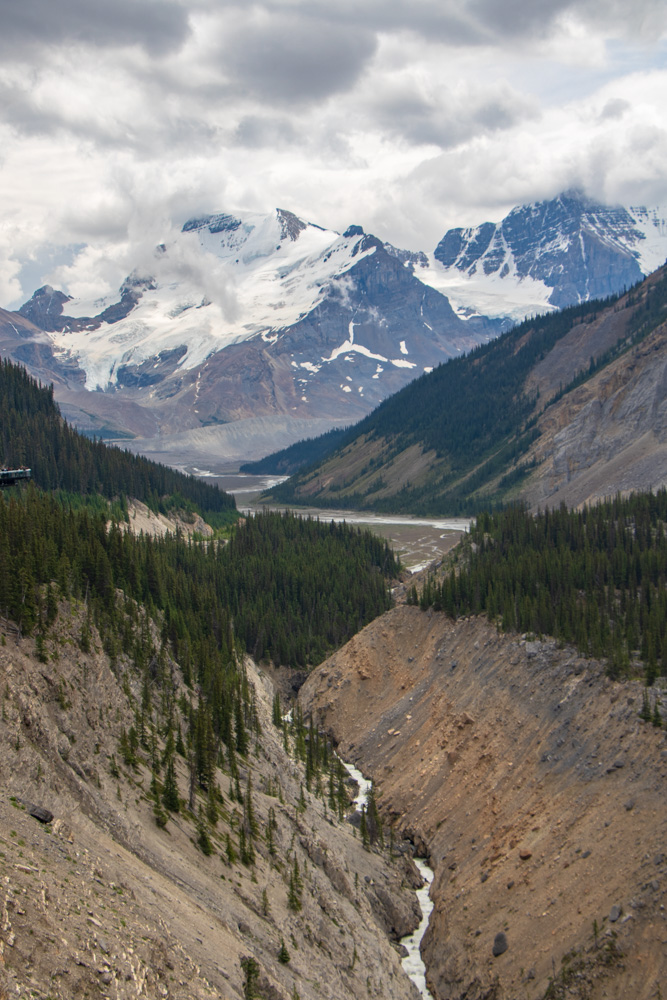
The view down was pretty amazing; you could see how the river was carving its path down through the rock. The valley was initially formed by a glacier, long long ago, as recognised by the characteristic "U" shape of the valley sides. At the very bottom the valley becomes sharply "V" shaped, indicating that this lower section had been ground out by the river. We overheard the guide from earlier pointing out some waterfalls low down on the valley wall. They seemed to appear from nowhere, with no visible stream or river feeding them. She said that this was due to the sedimentary rock that made up the walls of the valley; rain and snowmelt higher up flows down the cracks in the rocks and runs along below the surface until it gets to the bottom where it suddenly appears, shooting out of what looks like a shale hillside.
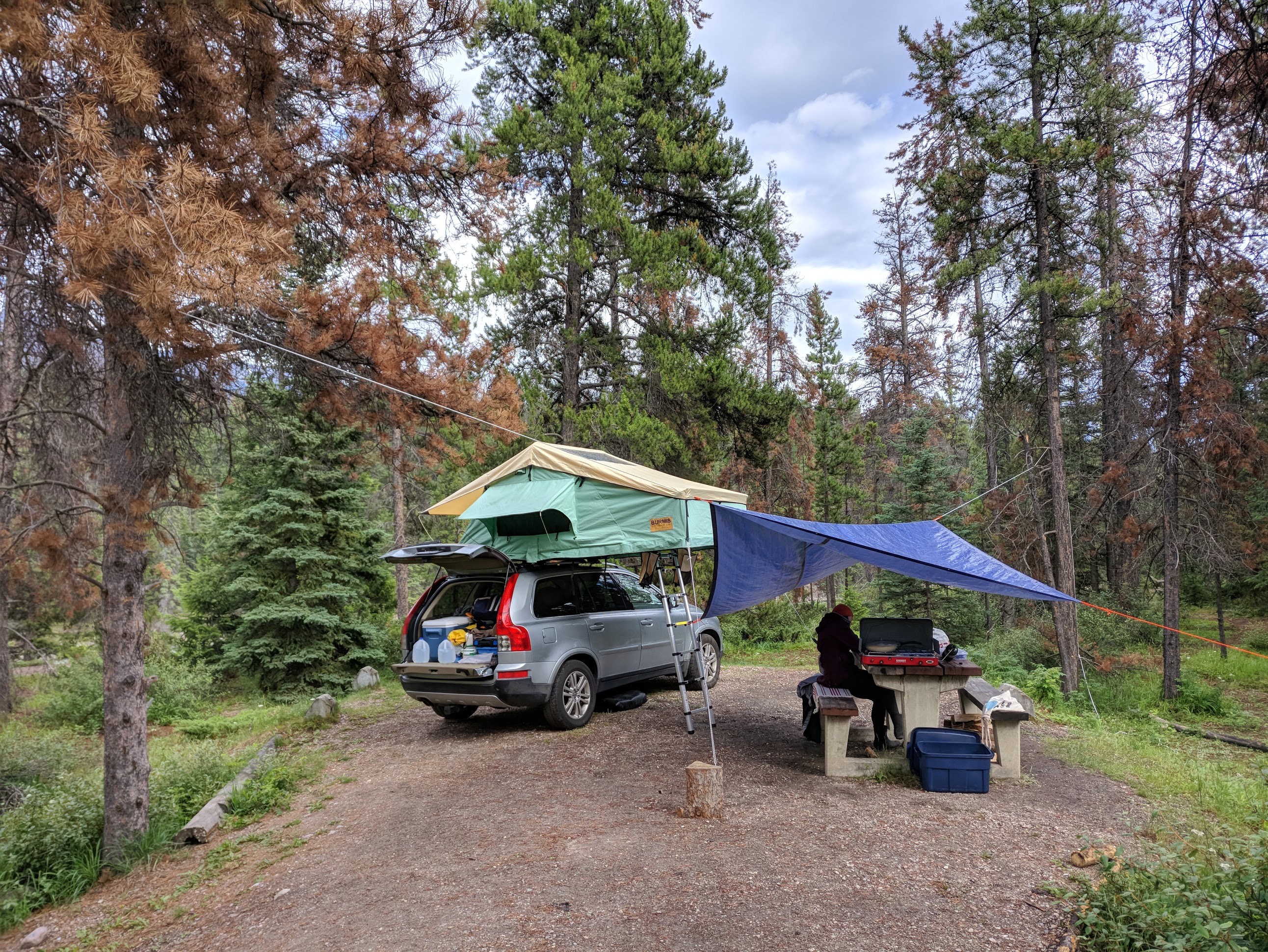
Heading back to camp, we called past a hardware store in Jasper to pick up some rope. Katie showed off her throwing skills with a rock attached to the new rope, and soon we had our most professional tarp setup to date strung up between two trees over the picnic table. We're now celebrating with toasted sandwiches and local craft beer.
